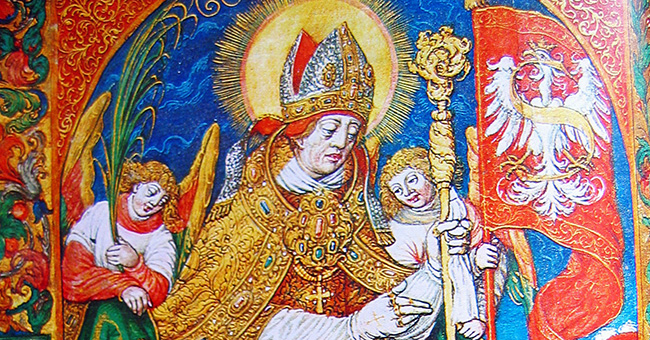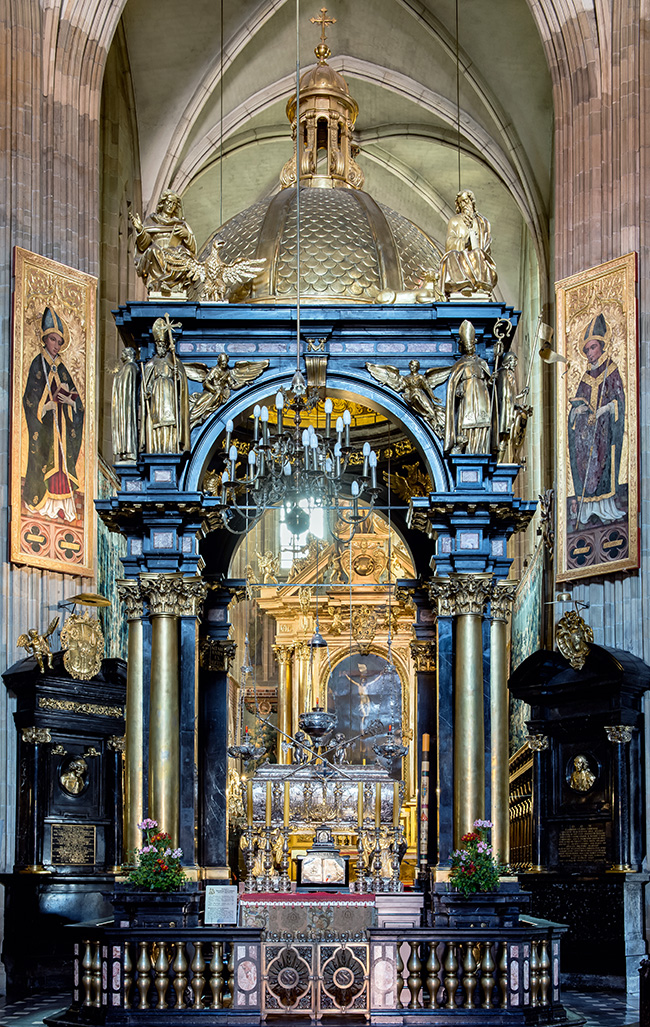Countdown to WYD: St. Stanisław’s Witness of God Before Government

On May 8th, Poland honors its first saint, St. Stanisław of Szczepanów (1030 – 1079). Since his canonization, Poles have celebrated the feast with a procession of the saint’s relics from the Church at Skałka, where he died, to his tomb at the Wawel Cathedral.

George Weigel and I discuss St. Stanisław at length in City of Saints, but given that his Polish feast day was earlier this week, it seemed appropriate to discuss a bit of his life and legacy.
There are many stories about St. Stanisław, but my favorite is about a land dispute that arose after the death of a nobleman named Piotr.
As the story goes, Bishop Stanisław found himself in a dispute over a parcel of land along the Vistula River, near Lublin. The bishop claimed to have bought the property from its owner; on the owner’s death, his heirs disputed the purchase and the king sided with the family. The bishop asked for three days to provide evidence for his claim, and spent those days in fasting and prayer. On the third day, dressed in his episcopal regalia, Bishop Stanisław went to the tomb of the deceased landowner and called him to life in order to bear witness to his sale of the property. After berating his three sons for their lie, the deceased man told the king that the property did indeed rightfully belong to the bishop of Kraków, and then returned to his repose in his tomb. (City of Saints, 148)
One piece left out of this story in City of Saints is that Bishop Stanisław asked the Piotr if he wanted to stay alive. “No” was the terse reply as he returned promptly to his grave.
Eventually, the same King Bolesław condemned Bishop Stanisław to death for treason. Although the historical details are not clear as to the cause of the accusation of treason, there is evidence that the bishop excommunicated the king, thereby weakening his political position. With his political power on the line, King Bolesław told his henchmen to kill the holy bishop. They refused, so the king had to do it himself. He attacked Bishop Stanisław while he was saying Mass at the church of Skałka, dismembered his body and threw parts of it into a nearby pond. Miraculously, the body of the dismembered bishop was reassembled followed by a proper burial. Bolesław left for Hungary, never to return to Poland.
More miracles were attributed Stanisław, clearing the way for his canonization in 1254. As the first Pole to be made a saint, St. Stanisław was later interred in a great silver casket in Wawel Cathedral. Even without his tomb, Skałka remains one of Poland’s great shrines.
St. Stanisław’s story has many parallels to those of saints Thomas Becket and Thomas More, the English martyrs he pre-dates by nearly a century and five centuries, respectively. Whatever the details of St. Stanisław’s death, the clear message that has come down to us, as Weigel explains, is that “Stanisław died in defense of the libertas ecclesiae, the freedom of the Church, and in doing so, he died in defense of the moral truth that arbitrary and despotic state power is unjust state power, a threat to the lives and liberties of the people.” (City of Saints, 137) Poland reiterated this message for centuries in its coronation ceremonies. While the royal throne was still in Krakow, the ceremony included a procession from Wawel to Skałka so that king and country could honor the memory of St. Stanislaw, his patronage of the city and country, as well as the proper order of God before the state.
The St. Stanisław procession that was held Sunday is huge event in Krakow: it includes every civic and religious group in the city dressed in full regalia carrying colorful banners. Led by the archbishop of Krakow, the relics of St. Stanisław are carried along with those of St. Brother Albert, St. Faustina, and St. Jacek (Hyacinth), and St. Florian.














